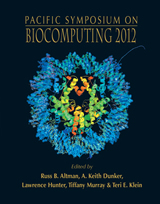Structural Models for Host-Pathogen Protein-Protein Interactions: Assessing Coverage and Bias
Eric A. Franzosa and Yu Xia
Bioinformatics Program, Department of Chemistry, Department of Biomedical Engineering, Boston University, 24 Cummington Street, Boston, MA 02215, USA
Email: franzosa@bu.edu; yuxia@bu.edu
Pacific Symposium on Biocomputing 17:287-298(2012)

Abstract
Recently, we applied structural systems biology to host-pathogen interaction and constructed the human-virus structural interaction network (SIN) based on a combination of solved structures and homology models. Subsequent analysis of the human-virus SIN revealed significant differences between antagonistic human-virus and cooperative within-human protein-protein interactions (PPIs). Although the SIN approach is advantageous due to the complementary nature of 3D structure and network data, integration of these data sources is associated with two potential issues: reduced coverage of the full human-virus PPI network, and the introduction of specific biases from structure determination. In this work, we evaluate the impact of these issues by comparing the growth and properties of human-virus and within-human PPI networks with and without structural models. We find that although the human-virus SIN is small in size, it is largely depleted for false positives, which are common in the full network. In addition, the SIN shows potential for major growth in the near future. Furthermore, compared to the full network, the coverage of viral species in the human-virus SIN is large relative to its size, suggesting that it may be a less biased sampling of the universe of human-virus PPIs. Next, we systematically compare structural versus full networks of human-virus and within-human PPIs in terms of functional, physicochemical, and network properties. We find that although there exist biases inherent to the structural approach, such biases tend to affect both human-virus and within-human PPIs equally. As a result, the significant differences between structured human-virus and within-human PPI networks are never contradicted by the full networks. Collectively, these results suggest that a structural approach to host-pathogen systems biology is not only justified, but also highly complementary to previous approaches. In particular, conclusions drawn from direct comparisons of host-virus and host-host PPIs within the SIN are minimally confounded by the inherent biases of the structural approach.
[Full-Text PDF] [PSB Home Page]